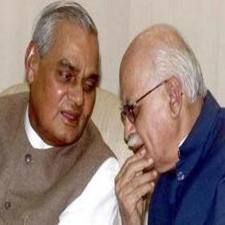
New Delhi, October 21: Congress general secretary Digvijaya Singh has suggested that there was evidence against the kin of former Prime Minster Atal Behari Vajpayee and L K Advani on alleged corruption and wrong-doing but Congress will never use that to embarrass them.
Singh also rejected as "hollow" and "media hype" the allegations of "nexus" among Sonia Gandhi's son-law Robert Vadra, DLF and Congress government in Haryana to give Vadra undue benefits in land dealings. Defending Gandhi, the Congress leader said that she was not Vadra's "Chartered Accountant" to question his rising assets.
"Not only me. There were lot of things, which came out during the NDA regime. But did Congress party ever use that. We will never use this... if I say, I do not have it (evidence against kin of Advani and Vajpayee), then it is not correct," Singh said replying to a volley of questions by Karan Thapar in Devil's Advocate programme on CNN-IBN.
He was asked about his statement that he had evidence against kin of Vajpayee and Advani.
Replying to questions, Singh also said that the evidence, which he has, "could" lead to allegations of corruption and wrong-doing against them and will be embarrassing for the leaders.
The AICC general secretary, was quick to add "politicians are also human beings. We are not gods...We can't keep a track or check on the innumerable relations, we have".
"Why should I be a complainant," Singh shot back arguing that there is Parliament and a number of authorities to look into these matters, when asked why was he not disclosing the evidence he has against kin of Vajpayee and Advani.
Dismissing allegations against Vadra, Singh said that there is no illegality in speedy clearance in mutation of land or change of land use permission, which are said to have happened in DLF-Vadra land deals.
"Sonia Gandhi is not the chartered accountant of Robert Vadra," he said, wondering whether "mothers-in-law also do the accounting for sons-in- law," when asked whether Congress president was aware of the rise in fortune of Vadra and whether she ever questioned it.
It is now being questioned that why the files moved so fast in the case of Vadra's land dealings, Singh said, adding that speed is not impropriety and should instead be rewarded.






Comments
Add new comment